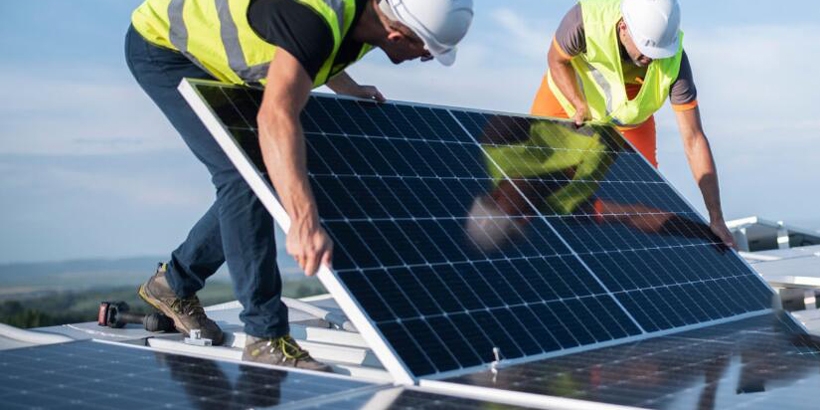Since solar panels can last up to 30 years or more, the solar panels you choose now will impact your energy production and cost savings in the foreseeable future. Choosing the most efficient solar panels for your system makes all the difference.
When you are looking for the most efficient solar panels for your solar power system, the first thing you should do is compare efficiency metrics for the solar panels manufactured by different brands. Solar panel efficiency is a useful way to compare solar panel products.
Solar panel efficiency basics
Solar panel efficiency (measured in percentage) lets you know a solar panel’s ability to turn sunlight into electricity. If solar panels with different efficiency ratings get the same amount of sunlight for the same amount of time, the more efficient panel will generate more electricity than the less efficient panel. It’s that simple.
While solar panel efficiency is one of the most critical attributes used to assess a solar panel’s quality, it is not the only factor to think about when choosing solar panels.

Types of solar panels
Monocrystalline, polycrystalline and thin-film solar panels
Another factor to look at when deciding on solar panels for your home is their design and the materials used to construct them. Most solar panels are made of either monocrystalline silicon, polycrystalline silicon or thin film. These three types of panels vary in their efficiency rates and physical characteristics. Each has advantages, though one stands above the rest and is Powerhome’s choice.
Monocrystalline and polycrystalline solar panels are made of silicon, a stable, durable material that is easy to access. Thin film solar panels are made from several different photovoltaic materials. Here’s a quick look at each type.
Monocrystalline solar panels
Monocrystalline solar panels use a manufacturing technique that gets the most out of the parent material silicon. In a monocrystalline solar panel, silicon ingots are cut into thin wafers and mounted on panels. The panels are dark black with a unique look that is easy to spot.
Because the silicon ingots have a very high purity rating, they excel at producing electricity. Monocrystalline panels are exceptionally efficient, require less space and perform better than other types of panels in low light. That’s why Powerhome uses only this type of panel. We want to give you a premium product that will perform to your expectations.
Some monocrystalline solar panels have efficiency ratings of more than 20 percent, though those are also more expensive. The panels installed by Powerhome have efficiency ratings nearing 20 percent, and we believe we have found the sweet spot in terms of value and efficiency for our customers.
Polycrystalline solar panels
The manufacturing process for polycrystalline solar panels is less expensive. These panels are made of melted silicon that are poured and cut into squares. Polycrystalline panels are not as efficient as monocrystalline panels (they can range between 15-17 percent), and they don’t perform as well as in low-light or high-heat conditions. They are usually larger, and their blue color is often considered less aesthetically pleasing than monocrystalline and thin-film panels.
![]()
Thin-film solar panels
Unlike other solar panels, thin-film solar panels are not made of silicon. They use alternative photovoltaic materials such as cadmium telluride (CdTe), amorphous silicon (a-Si), copper indium gallium selenide (CIS/CIGS), or organic photovoltaic cells (OPC). Although less efficient than monocrystalline and polycrystalline solar panels, they are easy to manufacture and can be attached to a flexible substrate, which broadens their applications. However, they have large space requirements, which is often not practical for roof layouts. They also degrade more quickly and typically have efficiency ranges between 10-13 percent.
What are the most efficient solar panels for your home?
Choosing the best solar panels for your home depends on what you value the most. While the materials used in manufacturing solar panels govern their characteristics, there is a lot of variety from panel to panel. To make an informed decision, look closely at the manufacturer’s efficiency ratings, warranties and other design elements that may affect their performance and installation.
At Powerhome, power an off-grid home, we offer high quality monocrystalline and polycrystalline solar panels for all your needs. We want to give you panels with premium efficiency, because you will have more satisfaction (and production) in the long run. To determine the size of solar panel system that works best for your home, we’ll be happy to talk to you.
(1).png)
(1).png)